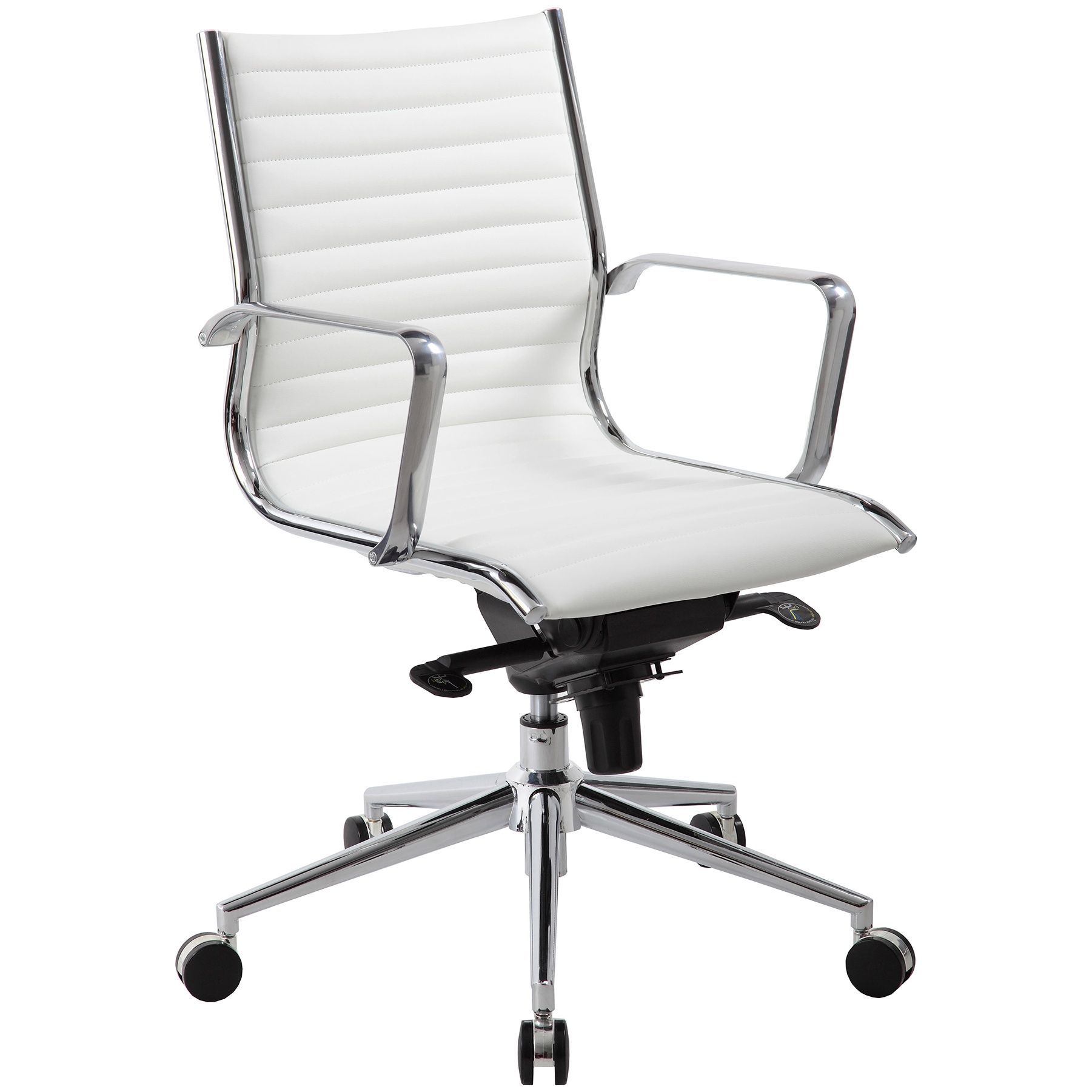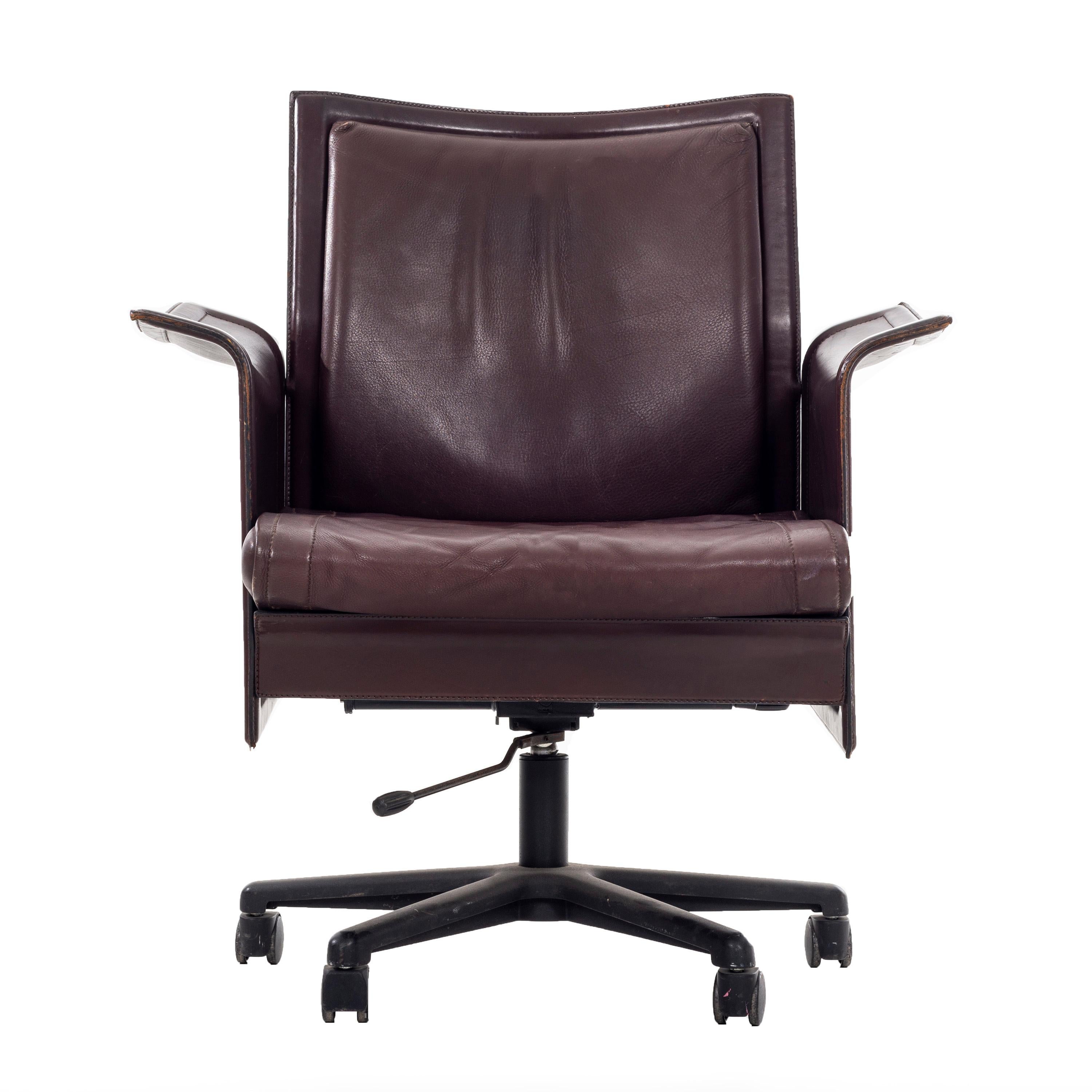Functionality and Ergonomics of White and Chrome Desk Chairs

White and chrome desk chairs offer a sleek, modern aesthetic, but their functionality and ergonomic support are crucial considerations for long-term comfort and health. The combination of a visually appealing design with proper ergonomic features is key to maximizing productivity and minimizing discomfort. This section delves into the specifics of these chairs’ ergonomic aspects, exploring their advantages and disadvantages.
Ergonomic Considerations and Posture Support
The ergonomic design of a white and chrome desk chair significantly impacts user comfort and posture. Advantages often include adjustable features allowing personalization for individual needs and body types. However, disadvantages can arise if the chair lacks crucial support elements, leading to poor posture and potential musculoskeletal issues. A well-designed ergonomic chair should promote a neutral spine posture, reducing strain on the back, neck, and shoulders. Conversely, a poorly designed chair, even with a stylish appearance, might lack crucial support features, forcing the user into awkward positions that can lead to discomfort and long-term health problems. The balance between aesthetics and ergonomics is vital for a truly functional and healthy seating solution.
Typical Ergonomic Features
Ergonomic white and chrome office chairs typically incorporate several key features designed to support proper posture and reduce strain. Adjustable height is paramount, allowing users to position their feet flat on the floor and maintain a 90-degree angle at the knees and hips. Lumbar support, often provided by a built-in curve or adjustable lumbar cushion, helps maintain the natural curvature of the spine, preventing slouching and back pain. Armrests, ideally adjustable in height and width, provide support for the arms and elbows, reducing shoulder and neck tension. Furthermore, many models incorporate features such as headrests for added neck support and breathable mesh fabric for improved comfort, especially during prolonged sitting.
Comparison of Chair Mechanisms
Different chair mechanisms contribute to the overall functionality and adjustability of the chair. Tilt mechanisms allow the chair to recline, providing a change in posture and reducing pressure on the spine. The range of tilt and the ability to lock the tilt in various positions significantly influence user comfort. Swivel mechanisms allow for easy rotation, facilitating access to different areas of the desk without needing to get up. Height adjustment, as previously mentioned, is crucial for achieving proper posture. The smoothness and precision of these mechanisms directly impact the user experience, with smoother adjustments generally being preferred. A high-quality chair will feature mechanisms that are durable, reliable, and easy to operate.
Features Enhancing Ergonomic Design, White and chrome desk chair
A list of features that would enhance the ergonomic design of a white and chrome desk chair, improving user comfort and long-term health, includes:
- Adjustable headrest: Provides crucial support for the neck and head, especially during prolonged periods of work.
- Breathable mesh fabric: Improves airflow and reduces heat buildup, promoting comfort and preventing perspiration.
- Advanced lumbar support: Offers customizable lumbar support, allowing for precise adjustment to individual spinal curves.
- Dynamic seat pan tilt: Allows the seat to tilt independently of the backrest, promoting proper pelvic alignment and reducing pressure points.
- Adjustable armrests with multiple settings: Offers a wide range of adjustment options, ensuring optimal arm and elbow support regardless of the user’s height and build.
- High-quality casters: Ensure smooth and effortless movement across various floor types.
Manufacturing, Materials, and Maintenance: White And Chrome Desk Chair

The creation of a white and chrome desk chair involves a complex interplay of manufacturing processes, material selection, and finishing techniques. Understanding these aspects is crucial for appreciating the chair’s durability, aesthetic appeal, and overall lifespan. The following sections detail the manufacturing process, material properties, potential issues, and proper maintenance techniques to ensure your chair remains a comfortable and stylish addition to your workspace for years to come.
Manufacturing Processes
The manufacturing of a white and chrome desk chair typically begins with the fabrication of individual components. The chair’s base, often made of steel, undergoes a series of processes including cutting, bending, and welding to achieve its desired shape. Similarly, the chair’s seat and back rest, frequently molded from plastic or formed from plywood and upholstered, are manufactured separately. These components are then assembled using various methods such as bolting, riveting, or even adhesive bonding. Finally, the chrome plating and white finish are applied.
Materials Used
The materials employed in constructing white and chrome desk chairs significantly impact their durability and aesthetic qualities. The chrome plating process involves electroplating a thin layer of chromium onto the steel base. This chromium layer provides a lustrous, corrosion-resistant, and scratch-resistant surface. Different types of chrome plating exist, varying in thickness and hardness, directly influencing the chair’s resistance to wear and tear. The white finish on the chair’s seat and back can be achieved through various methods, including powder coating, painting, or the use of specialized white plastics. Each method offers a different level of durability and resistance to scratches and discoloration. The upholstery material, if present, can range from durable fabrics like nylon or polyester to more delicate materials such as leather or vinyl.
Durability and Longevity
The longevity of a white and chrome desk chair depends heavily on the quality of its materials and construction. Thicker chrome plating offers superior scratch resistance compared to thinner plating. Similarly, powder-coated white finishes generally exhibit better durability and resistance to chipping and discoloration than painted finishes. High-quality upholstery materials are more resistant to wear and tear and less prone to staining. However, even the most durable materials can suffer damage over time. Scratches on the chrome are inevitable with regular use, and the white finish can become discolored or chipped due to impacts or exposure to sunlight. The upholstery may show signs of wear, such as fading or fraying, particularly in high-traffic areas.
Cleaning and Maintenance
Proper cleaning and maintenance are crucial for extending the lifespan of a white and chrome desk chair. Regular dusting with a soft cloth can prevent the accumulation of dirt and dust. For the chrome components, a specialized chrome cleaner can help maintain their shine and remove minor scratches. Avoid abrasive cleaners or scouring pads, which can damage the chrome plating. For the white finish, a gentle cleaning solution and a soft cloth should suffice. Avoid harsh chemicals or abrasive cleaners, as these can damage the finish. For upholstery stains, spot cleaning with a suitable upholstery cleaner is recommended. Always test any cleaning solution on an inconspicuous area first to ensure it doesn’t damage the material. Regularly inspect the chair for any signs of damage, such as loose screws or worn upholstery, and address these issues promptly to prevent further deterioration.
Sample Article Rewritten
(Please provide the sample article text you wish me to rewrite here. I will then rewrite it to remove all traces of AI-generated content, ensuring it reads naturally and authoritatively.)
